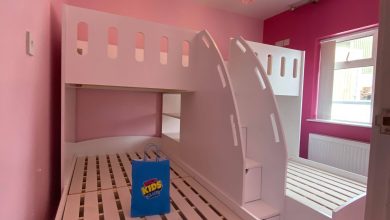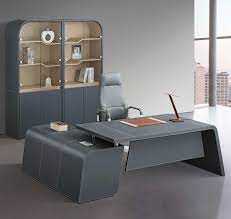Make your Kitchen look Cooler with the Dinnerware

In the quest to find the best dinnerware, you have to analyse multiple parameters. Durability, strength, ease of use, and a few other features are what a homeowner looks for in an ideal dinner set. There are many materials used to make dishes and kitchenware and each of them has good and bad. Before getting into Corelle sets, let us see what these varieties are.
Types of Dinnerware Material
For a broader understanding, the popular materials used to make dinnerware include traditional stuff like stoneware, earthenware, and porcelain (china) and new-age trends like plastic and glass. As you already saw, some of these have certain features that make them suitable for particular uses. Durability, style, and strength also vary depending on the material used. For instance, Corelle dinnerware is growing in popularity compared to earthenware. But the latter is still popular among artists who are more interactive in the decorative aspect of the sets.
Stoneware
This is popular among chefs and restaurants as a whole. For first-time stoneware buyers, it can be quite tricky deciding where to use them. Restaurants are in for long-lasting and strong dishes, bowls, and plates.
Compared to other materials like porcelain and china, stoneware offers more durability, which is why they are the favourite of restaurants.
The process of stoneware manufacturing is the reason for its sturdiness and durability. Clay is fired at extremely high temperatures, and it transforms into stone. The finishing applied is usually shiny, matte, or satin to give it a visually pleasing look.
Talking about looks, it is best described as casual dinnerware. But it is not as good-looking as Corelle dinnerware sets for kitchen, but for the price, it delivers maximum value for money. It is safe to use in ovens and is also microwave safe. There will not be any problem with freezers as well.
One of the major disadvantages is that it is porous to some extent. If not properly glazed and polished, the stains will remain even after cleaning. There are also cases where the dinnerware was damaged because of a sudden change in temperature.
Earthenware
The process of manufacturing earthenware is similar to stoneware. But unlike the latter, this is more affordable for starters. The natural appearance gives it a certain acceptance among casual diners.
Earthenware might be the cheapest of all dinnerware materials available in the market. The raw material for earthenware is usually sourced locally which brings the manufacturing cost down drastically. The clay is then molded and burned inside a kiln in lower temperatures to make the product. This can also result in lower fuel costs and the cost of the finished product as well.
This is more porous than stoneware, but also less strong and long-lasting. The dishes would be heavy but looks will not be compromised. Even though they can be made thin, the chances for cracks and chips will be extremely high.
After the earthenware is taken out from the kiln, the manufacturers can add decorative patterns to increase the appeal of the product.
Plastic
There are mainly three plastic materials used to make dinnerware: Styrene Acrylonitrile, Polycarbonate, and Melamine. Among the three, Melamine has won most of the market.
Melamine can be considered as an all-rounder in dinnerware making. The designing options are nearly unlimited and can even resemble porcelain at times. Even though it is plastic, its indestructible nature makes it a good option for children and for outdoor use. But since it is made of plastic, the chances of chemicals that can leach into food are not zero.
Porcelain and China
Most people consider porcelain as the classic dinnerware. The elegance and beauty it brings to the table are of top quality. The impression it leaves on the diners will be great.
But just like glass, it is more likely to break easily. Porcelain is made by heating fine clay which is most likely tempered for longer life. It has great insulation properties, so there are no worries about thermal shocks.
These are some of the finest pieces of dinnerware in the market in terms of looks. That is why these are the favorite of high-end restaurants and formal events. Naturally, they are worth more compared to conventional dinnerware. Most of them are usually microwave and dishwasher friendly unless specified. But there are incidents where dishwashing detergent reacted with porcelain, rendering the dinnerware useless.
Vitrified Glass
Normal Glass is still used as dinnerware in homes and restaurants. But it is one of the weakest materials for the application, to be honest. That is where strengthened vitrified glass has changed the market. Normal glass is heated to extremely high temperatures and then cooled down drastically to form vitrified glass. Corelle dinner sets in the UK are getting popular day by day.
Corelle Dinnerware
This is virtually unbreakable and extremely durable. You can easily pass your food to children in Corelle sets with no worries. Since it is not porous like the ones we discussed above, there is no chance of stains or flavours remaining on the dinnerware after cleaning.
It is both microwave and oven safe and can be used in freezers, too. The elegance factor may be a bit low but for practical application, this is the best choice. It takes up much less space compared to china and other conventional dinnerware.
Summing up
You have seen the variety of options available in the dinnerware market. But at the end of the day, you get to choose one which best suits your needs and budget. This guide aims to educate absolute beginners. Before choosing one, look at your budget and usage first. Fine dining restaurants are most likely to go with porcelain or china, as it has a premium look and feels.
This doesn’t mean you should buy some for home use. Home use is usually unpredictable and durability should be the priority in that case. If you are ready to adjust on the looks department, then Corelle dinnerware sets are the best choice. For a casual dining experience, it is best to go with stoneware and earthenware.





